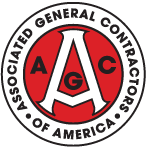What is a Construction Defect?
There has been much controversy within the construction industry with respect to, “ what is a construction defect?” Much of this controversy has proliferated because of the different viewpoints of the parties who are asking the question, and/or making the determination, e.g., builder, developer, contractor, subcontractor, material supplier, product manufacturer, homeowner, homeowners’ association, etc.
There is no short answer to this question and the answer is somewhat multi-faceted, determined by many variables. However, there is a big difference between a construction defect and a nuisance claim, such as a squeaking floor or conditions resulting from lack of maintenance or normal wear & tear. Construction defects could range from complex foundation and framing issues, which threaten the structural integrity of buildings, to aesthetic issues such as improperly painted surfaces and deteriorating wood trim around windows and doors.
The trial courts have recognized that construction defects are tangible and can typically be grouped into the following four major categories:
-
Design Deficiencies - Sometimes, design professionals, such as architects or engineers, design buildings and systems, which from a performance standpoint, do not always work as intended or specified. The motivation for the design may be form, function, aesthetics, or cost considerations, but the completed design could result and/or manifest into a defect. Problems are typically encountered with roof systems, which due to their design complexity, pitched or flat, are prone to leaks. A majority of roofing problems are a direct result of the improper specification of building materials, which can result in water penetration, intrusion or other problems, as well as poor drainage design and/or the inadequacy of structural members, which can result in cracks and deterioration of roofing components and materials.
-
Material Deficiencies – The use of inferior building materials can cause significant problems, such as windows that leak or fail to perform and function adequately, even when properly installed. Leaking windows are a common defect and prevention requires good workmanship. Window leaks can result from many things including, rough framing not being flush with outside at openings, improperly flashed windows, improperly applied building paper, window frame racked during storage/moving, lack of sheet metal drip edge above window header, etc. Common manufacturer problems with building materials can include deteriorating flashing, building paper, waterproofing membranes, asphalt roofing shingles, particle board, inferior drywall and other wall products used in wet and/or damp areas, such as bathrooms and laundry rooms.
-
Construction Deficiencies (Poor Quality or Substandard Workmanship) - Poor quality workmanship often manifests as water infiltration through some portion of the building structure. Cracks in foundations, floor slabs, walls, dry rotting of wood or other building materials, termite or other pest infestations, electrical and mechanical problems, plumbing leaks and back-ups, lack of appropriate sound insulation and/or fire-resistive construction between adjacent housing units, etc.
-
Subsurface / Geotechnical Problems - California, Colorado, and other parts of the country have a significant amount of expansive soil conditions. As a result of this type of terrain, there have been many problems when housing subdivisions and/or developments are built into hills or other sloping areas where it’s difficult to provide a solid and/or stable foundation. If the subsurface conditions in these subdivisions and/or developments are not properly compacted and prepared for adequate drainage, problems will inevitably result, which can include vertical and horizontal settlement (subsidence), movement (expansion), slope failures, flooding, and in extremely wet/rainy climates, landslides, etc. These types of conditions typically lead to cracked foundations, floor slabs, and other damage to a building. A worst-case scenario in some instances could render a building uninhabitable, as well as uninsurable.
The courts have typically used these categories and associated standards to determine culpability for construction defect problems. The metric used to measure is whether the specific condition under review has violated any applicable building codes, is the direct result of construction means, methods, or practices that are below the standard of care in the building industry, resulted from a deviation from the Permitted/approved plans and specifications, or the specific condition is below the reasonable expectation of the home buyer/owner.
The information provided by C-Risk on construction defects is intended for general information purposes only and does not constitute, nor is it intended to constitute, legal advice. You should always consult with legal counsel to determine how the laws or legislative decisions on construction defect liability apply in your specific State and/or circumstances.
For additional information about C-Risk Construction Defect Mitigation services or how we can assist you with your risk management program, please contact us at 503-228-0884 or email This email address is being protected from spambots. You need JavaScript enabled to view it..










